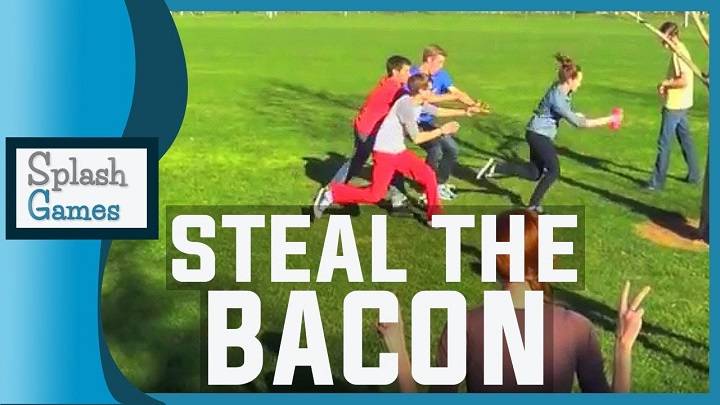Icy Tower: The Bouncy, Floor-Hopping Classic That Created a Generation of Pixel Ninjas

You sit before a retired Windows XP desktop. The CRT monitor whirrs. You double-click a pixelated icon: Icy Tower. And then, chaos.Jump. Bounce. Wall run. Slam that spacebar. You fall. You get up. You fall again.
But you never quit. Because every level matters. Every jump has a beat. And somewhere further up in the tower above, greatness awaits.
Let the Icy Tower begin, the game that looks simple but feels like a Red Bull-fueled platformer designed by speedrunners on coffee.
It’s a vertical climb of timing, combo momentum, and pin-point control. It’s a simple arcade, in a virtual era of overwrought AAA games. And for a whole generation, it was the one to grasp for school computer lab time, college dorm room parties, and rainy afternoons.
What Is Icy Tower?

Icy Tower is a freeware arcade-style platform game. It was developed by Free Lunch Design. It was released in 2001 for Windows.
The premise is simple:
- You control a character who has to climb a never-ending vertical tower. By jumping from floor to floor.
- The goal? Get as high as possible. Chain jumps. Build momentum. Rack up scores.
- Fall below the screen, and it’s over.
- That’s it. No story. No enemies. Just you, gravity, and rhythm.
It’s the definition of easy to pick up, impossible to master.
The Origins of Icy Tower: From Sweden with Speed
Icy Tower was created by Johan Peitz, a Swedish free lance developer and Free Lunch Design owner.
He desired to make a game that was:
- Easy to play
- Fast
- Very replayable
He also wished it to be as 80s arcade games were, but with the speed of input today.
The outcome was a game that was less than 2MB and could be played on almost any PC from the year 2000 to the year 2010.
And yet it gave hours of frustration, joy, and ruthless competition.
It was at its height one of the most downloaded freeware games in the world.
Before Steam, before itch.io, and long before the rise of the smartphone as a gaming device, Icy Tower was what you played between homework and MSN Messenger.
Hello Harold: The Beanie-Hat-Wearing Jumper Who Started It All
The protagonist in the original game is a pixelated clown. He is called Harold the Homeboy.
He wears a striped t-shirt, and flappy pants. Wears a pom-pom hat on his head.
He moves, leaps, and ascends for his existence.
Harold was early icon-ized as part of 2000s PC gaming culture.
Other characters were added later, though, either by the dev community or the fandom.
Some highlights:
- Disco Dave – platform with animations inspired by funk
- The Ninja – faster animations
- Santa Harold – holiday skin, use while supplies last
- Personal fan-made avatars – from Mario to anime characters
The community remixed and modded the game in an instant, adding an infinite amount of flavor to Harold’s universe.
How the Game Works: Core Gameplay Mechanics

In appearance, Icy Tower is just jumping between floors.
But under the surface? It’s a ballet of timing, velocity, and combo physics.
Objective
Make an attempt to climb as high as you can without dying.
Controls
- Arrow keys: Movement left and right
- Spacebar: Jump
- Momentum mechanic: The longer you’ve been moving forward, the farther and higher you jump
Combo Scoring
- Jump floor by floor consecutively without stopping to acquire combo multipliers
- The game favors smooth motion over jerky motion
- A smooth run feels like wall-to-wall parkour and not fidgety hopping
The Challenge
- The screen ascends more rapidly the more you climb
- Miss a floor, and you can’t ever catch up
- Small platforms, and some spaced wide apart, and others that move
Scoring System
- Height: Total number of floors ascended
- Combo score: Based on how many floors consecutively you land on with one jump
- Style score: Bonus for insane jumps, turnarounds, or last-second saves
Speedrunning and Competitive Play
What was once a calm time-waster turned into a playground for speedruns.
Players started to post:
- Highest floors climbed
- Longest combos completed
- Fastest climbs up
- Video recordings of gameplay using third-party capture software or in-game ghosting options
Top players mastered the following tricks:
- Wall momentum flip: Flip from a wall to reverse direction in mid-air
- Combo bounce: Jump onto the edge of a platform with an active combo
- Momentum loop: Run up and back on three platforms to create a mega jump
By the mid-2000s, there were full-fledged leaderboards, clans, and forums.
Some players reached more than 10,000 floors.
That’s taller than Mount Everest… ten times.
Mods, Skins, and Customization
One of the most interesting aspects of Icy Tower? It was highly moddable.
Players could:
- Change characters with PNG spritesheets
- Swap out music for MP3s
- Modify platform styles
- Design their own tower themes (castle, clouds, space)
- Tweak movement physics with .cfg files
Some popular mods included:
- Anime Tower – Harold clones modelled on Naruto
- Matrix Mod – Green code backgrounds and slo-mo jumps
- Rave Tower – Techno soundtracks and neon lighting
And there were even complete meme packs, Pokemon towers, and Star Wars skins.
Modding added years to the life of the game, and created some of the strangest and most unorthodox gameplay styles on the planet.
Music and Sound Design: The Secret Sauce of Energy
The default Icy Tower soundtrack is a techno loop that’s quick-paced, like a shot of espresso.
It’s catchy. Straightforward. Maybe a bit grating after floor 300.
But it does the job: keep you on your toes.
Sound effects are used sparingly:
- Jump whoosh
- Platform land “thump”
- Combo ding
You only hear what you require, and nothing more.
It’s laser-precise design.
But does it grow old? Replace the music file. Many did.
Icy Tower Mobile: The Touchscreen Evolution

During the 2010s, Icy Tower came to iOS and Android.
These versions featured:
- Tap-based controls
- New character skins
- Social leaderboard integration
- Power-ups like slow-motion or double jump
As much fun as the game provided, however, the majority of purists still thoroughly enjoyed the PC original due to its solid controls.
But the mobile releases introduced the franchise to a whole new generation.
To kids who were growing up on smartphones, Icy Tower wasn’t old-school, it was tubular.
Fanbase, Forums, and Online Culture
The Icy Tower fan community ultimately became quite enormous and engaged:
- Icy Tower Community Forums (now archived)
- YouTube channels dedicated to trick jumps
- Combo tutorials
- Commentated replays
- Speedrun competitions
Even years afterwards, gamers still kept racing and challenging others to:
- 100-floor dash races
- Survival games
- Mod display contests
- Fan art drops
It was a small community based on a simple concept.
Let’s see who can travel the furthest and be cool while doing so.
The Legacy: Why Icy Tower Still Matters in 2025
Here’s why Icy Tower is a classic:
- It’s timeless – Pixel art doesn’t get old like 3D does
- It’s skill-based – No RNG, no power-ups, just cold mechanics
- It’s accessible – Can be played on toasters, can be learned in 30 seconds
- It’s infinitely replayable – No two runs are ever the same
- It learned rhythm and momentum before it was cool
In an era of microtransactions, tutorials, and hand-holding in games, Icy Tower is one of the purest examples of arcade platforming ever conceived.
It never needs updates. It never needs seasons.
It just needs you, a keyboard, and a want to go one floor up.
Icy Tower, the Indie Icebreaker That Climbed into Our Hearts
We can have an age of 4K gaming and 200-hour RPGs.
But nothing’s as memorable as that glorious coupling in Icy Tower.
That building is over ten floors. That rescue from the edge of the screen. That leaderboard dash that gets your hands sweating. Icy Tower isn’t nostalgia, it’s a template. To programmers, it reminds us that tight controls + smart design = forever playable. To players, it’s proof you don’t need 100GB installs or photorealism to have fun.
And to the community? It’s a cold capsule of how games used to be. Simple. Frenetic. Hooked. Rewarding.
So if you have not been playing for a while. Then maybe it’s time to install it again. Try Harold. Break your old combo record. Climb until your spacebar is worn out. Because no matter how high you’ve climbed There is always one more floor.




